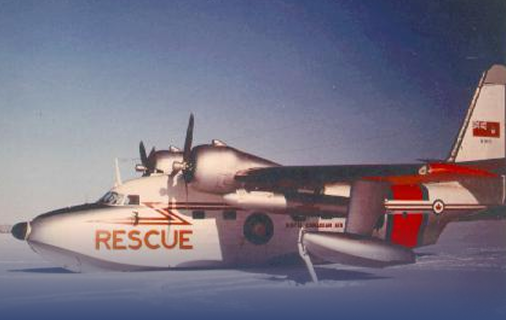
A Cold War rescue in Greenland where HU-16 crews braved blizzards, darkness, and mechanical failures to save stranded scientists.
During the Cold War, an Air Force Albatross crew faced an Arctic nightmare. In January 1952, scientists on a U.S. Navy-led geomagnetic survey (Project MAGNET) crashed their C-47 into the ice near Thule Air Base, Greenland. Plunging into a whiteout blizzard, survivors radioed for help. The USAF scrambled its rugged "Goat" — tail number 51‑304 — with Maj. James Johnson at the controls and Lt. Eva Chen navigating. Battling gale winds, subzero temperatures, and 24-hour darkness, the Albatross descended onto a precarious runway of packed snow and ice.
Challenging conditions: When the rescue crew arrived, they found blizzard-like winds and zero visibility. Lt. Chen described how snow blinded the cockpit as the men guided the seaplane onto the rough ice field using hand signals and prismatic markers.
Risky landing: The Albatross settled down hard, but a hydraulic failure immediately collapsed its nose wheel upon touchdown. Stranded on the frozen landscape, the intact aircraft now trapped its crew and the eight scientists with no runway to take off again.
Plan B emerges: A second Albatross was rushed in from Greenland to evacuate the stranded party, only to suffer propeller damage on landing. Now multiple crews were stretched thin. Engineers on the ice strip rigged temporary parts and phone-plug adaptors from a downed ski plane, but time was running out as hunger and cold bit at everyone.
Ingenious repairs and rescue: Over four tense days, parts and mechanics were shuttled by ski plane and cargo aircraft. The crews cannibalized a spare nose gear and patched the wing's hydraulics. Finally, at dawn on the fifth day, both Goats were ready. Maj. Johnson throttled up in the dim polar morning and slowly raised heavy cargo gear. One by one, all scientists and airmen climbed aboard the two Albatrosses, which lurched through the snow, engines screaming, and lifted away to safety.
Legacy and testament: Called "Nanook 52," this mission became legend. Stranded in the Arctic dark, the rescue crews refused to abandon their people or their planes. Their resolve — and the Albatross's rugged design — turned a disaster into a triumph. Decades later, this story inspires the vision of Albatross 2.0: no distance or condition can keep us from reaching those in need.
